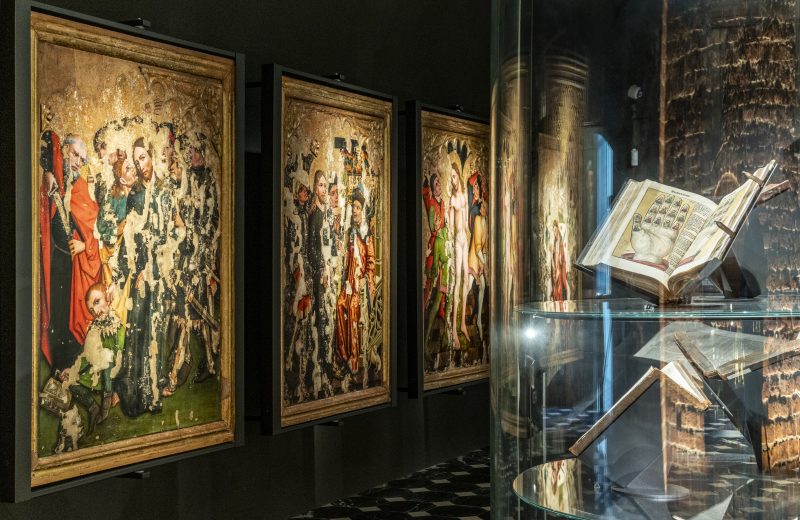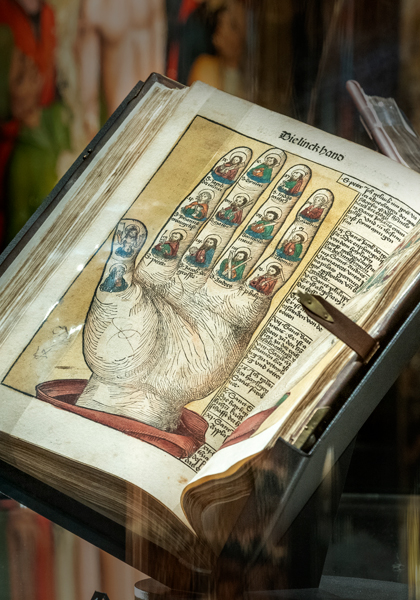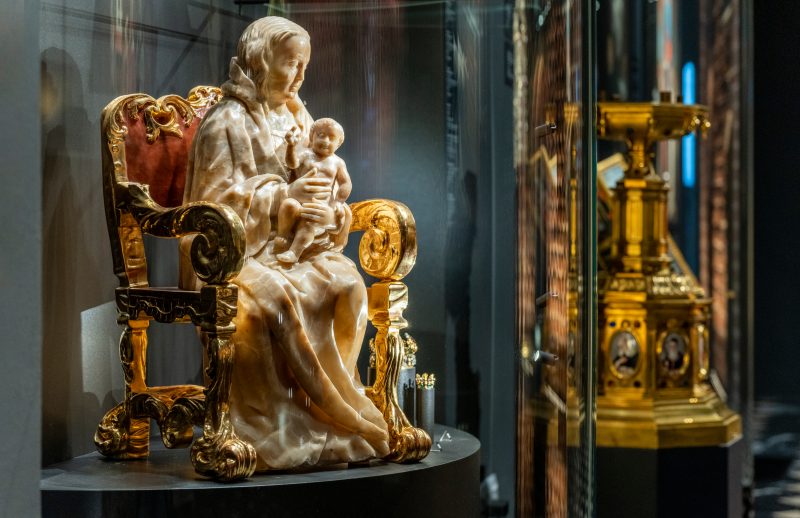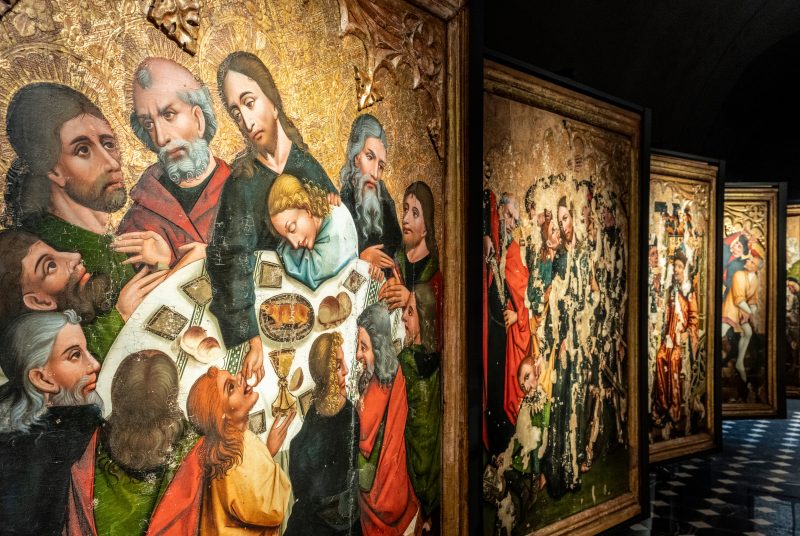The Dominican Museum’s collection comes primarily from the Krakow priory, where the brothers have been living and praying continuously since 1222. For centuries, it was mainly in Krakow that the seat of the prior provincial (the leader of the Polish province of the Order of Preachers) was located. Until the Modern Period, the Polish province, apart from the Kingdom of Poland (called “the Crown”), also included Silesia, Pomerania, Prussia, the lands of Lithuania and Ruthenia. During the partition turmoil, the province’s borders were unstable. Eventually, it was decided that the most valuable collections – books, liturgical objects, works of art – would be kept in Krakow. This is where, after 1945, Dominican treasures from monasteries in the eastern lands found their way.
The Museum’s collection includes works of art, especially numerous paintings depicting biblical scenes, Dominican saints and members of the order, sculptures and stained glass windows. Objects used in the liturgical tradition, such as books and vestments, reliquaries and monstrances, chalices and patens, have been collected here over the centuries. The history of Polish Dominicans is told through documents and various items collected in the Museum, including an extraordinary collection of seventeen scientific instruments used for astronomical observations, geodetic and time measurements. Floor tiles, antique jewellery and many other finds from various periods are also testimony to the past history and activities undertaken by the friars.


The Museum’s collection also includes the memorabilia of Father gen. Adam Studziński’s, who was a chaplain of the Polish Armed Forces and a participant of the Battle of Monte Cassino. For many years Father Studziński conducted excavations in the Krakow priory as well as took care of conserving and documenting the finds. In addition to war memorabilia, you can also see hundreds of digitised and annotated photographs taken by Father Studziński over the years. The exhibition is accompanied by a documentary film presenting the history and charism of the Order of Preachers.
Among the most valuable elements of the collection there is a set of the oldest stained glass panels in Poland, dating from the 13th and 14th centuries, with a scene of the Crucifixion, busts of St. Augustine and St. Stanislaw, an image of Madonna and Child, as well as a symbolic presentation of the Holy Trinity. What is also completely unique is the collection of six alabaster figurines depicting Christ and five apostles, which were created either in southern Netherlands, or northern France, in the 15th century. Also, the Museum is proud to possess a three-volume gradual (a Mass chant book) written by Wiktoryn in 1536 and used until the 19th century.
Many exhibits are related to St. Hyacinth, for example an alabaster statuette of so-called Our Lady of Hyacinth, allegedly saved by him from burning Kiev, and later kept in a priory in Lviv. Also unique is a copy of the canonization banner of St. Hyacinth made in Krakow in the second quarter of the 17th century, modelled on the one displayed during the Saint’s canonization ceremony in 1594 in St. Peter’s Basilica in the Vatican. The Museum also has two pages from a lost copy of On the life and miracles of St. Hyacinth (De vita et miraculis sancti Iacchonis), by Brother Stanisław, a reader at the priory in Krakow, from around 1360, a copy probably made for the priory in Plock.
A particularly valuable memorabile is a bronze seal, made in Western Europe at the turn of the 13th and 14th centuries, with an image of Madonna and Child and the inscription S[IGILLUM] FR[ATR]IS IOHANNIS ORDI[NIS] PRED[ICATORUM]. The collection also includes a top-class work of medieval embroidery and the oldest piece of liturgical fabric in the priory, i.e. a cross made of a chasuble, presenting the Throne of Grace (one of the ways of presenting the Holy Trinity), probably made in Krakow around 1380–1395.


Undoubtedly, a piece of remarkable art is The School of St. Thomas Aquinas, a painting by Thomas Dolabella, a Venetian painter active at the royal courts of the kings of the Vasa dynasty, who in 1618 rented from the Dominicans a house in Stolarska Street and was buried in one of the basilica’s chapels. Unfortunately, many of his works were burned in the fire of 1850.
The golden monstrance from the priory in Podkamien is also of exceptional value. It is decorated with multi-coloured enamel, with a wreath traditionally considered to be the wedding ornament of Queen Bona. It is one of the top-class goldsmith products of the former Polish-Lithuanian Commonwealth, probably created in the second half of the 17th century, characterised by exceptional elegance and rich decorations.
A real surprise may be the collection of antique jewellery – Roman gold rings with gemstones, earrings, lunula, and a bronze figurine of a panther (perhaps a clasp or a vessel handle). It remains unknown how these items, discovered during archaeological excavations, found their way to the Krakow priory.
The oldest exhibit in the Museum is probably a set of objects from the 13th century, discovered in the archaeological excavations and related to the beginnings of the priory. These include floor tiles from various parts of the site; namely: tiles covered with glaze, relief tiles, or tiles encrusted with engobe (a thin layer of a noble material) and decorated with figures or ornaments. Thanks to the efforts of archaeologists, this complex of tiles includes about 700 elements. Recently, the remains of a kiln for firing ceramics was found, which proves that the tiles were made in the priory. Very similar tiles are also found in other churches in Krakow, especially the Wawel Cathedral, and it seems likely that the Dominican priory was an important centre of their production on a local scale.
